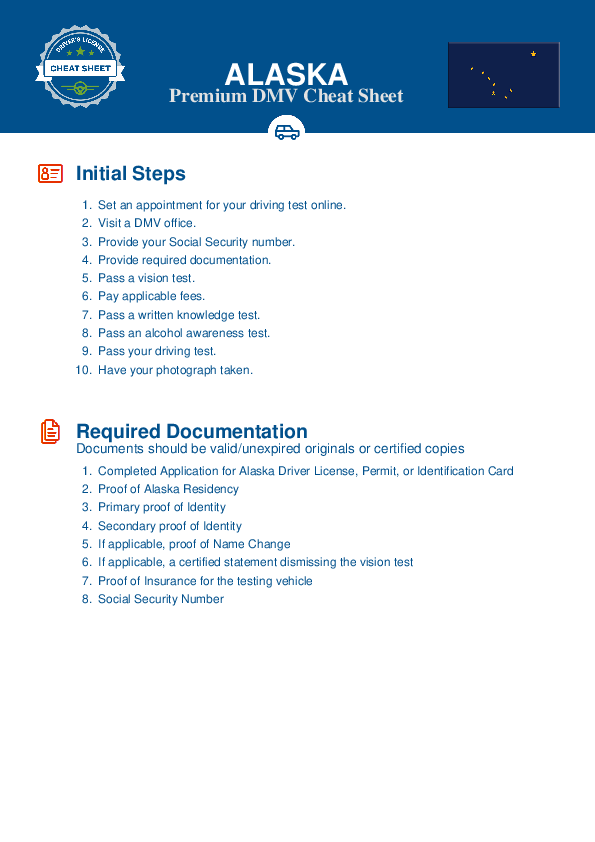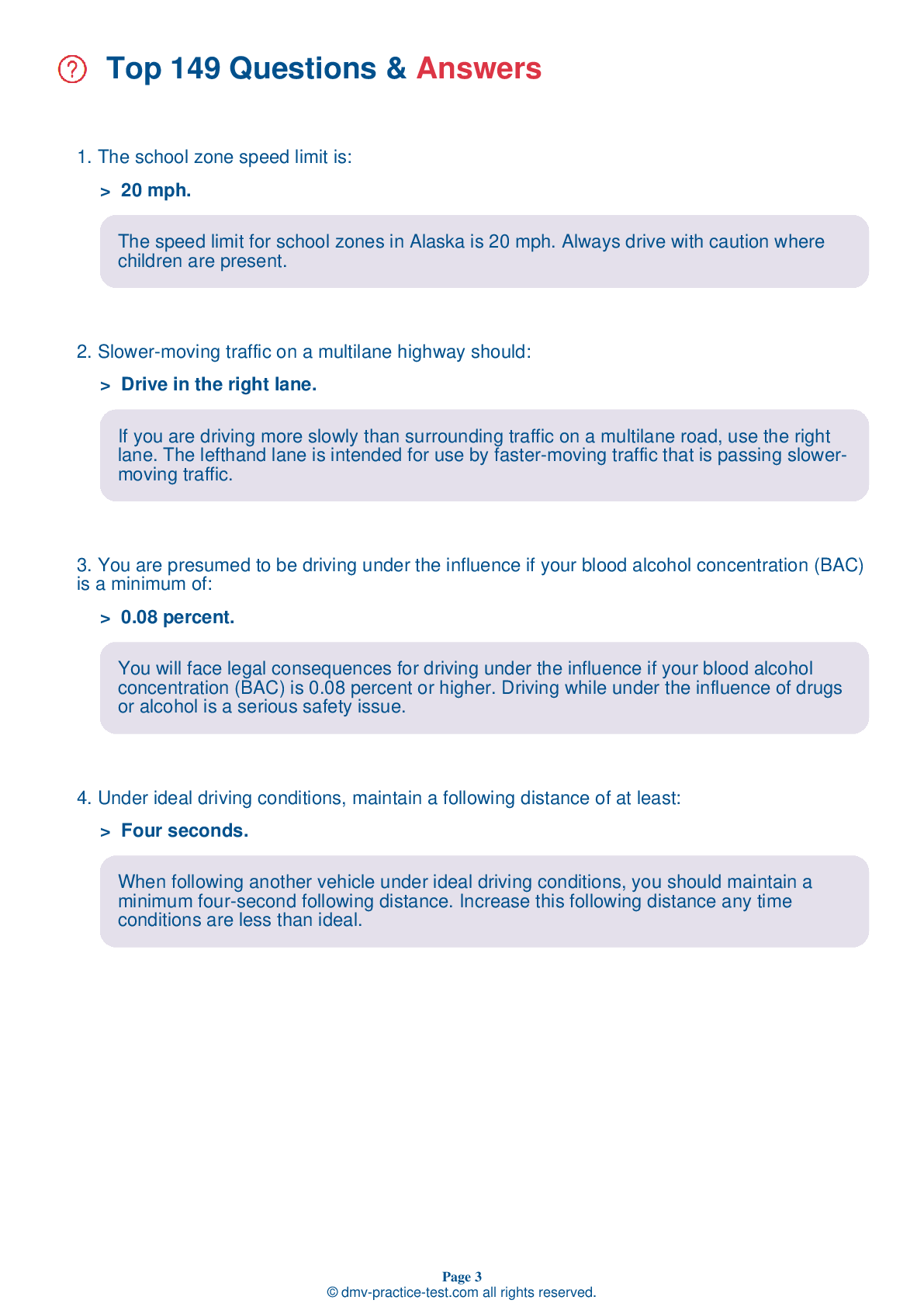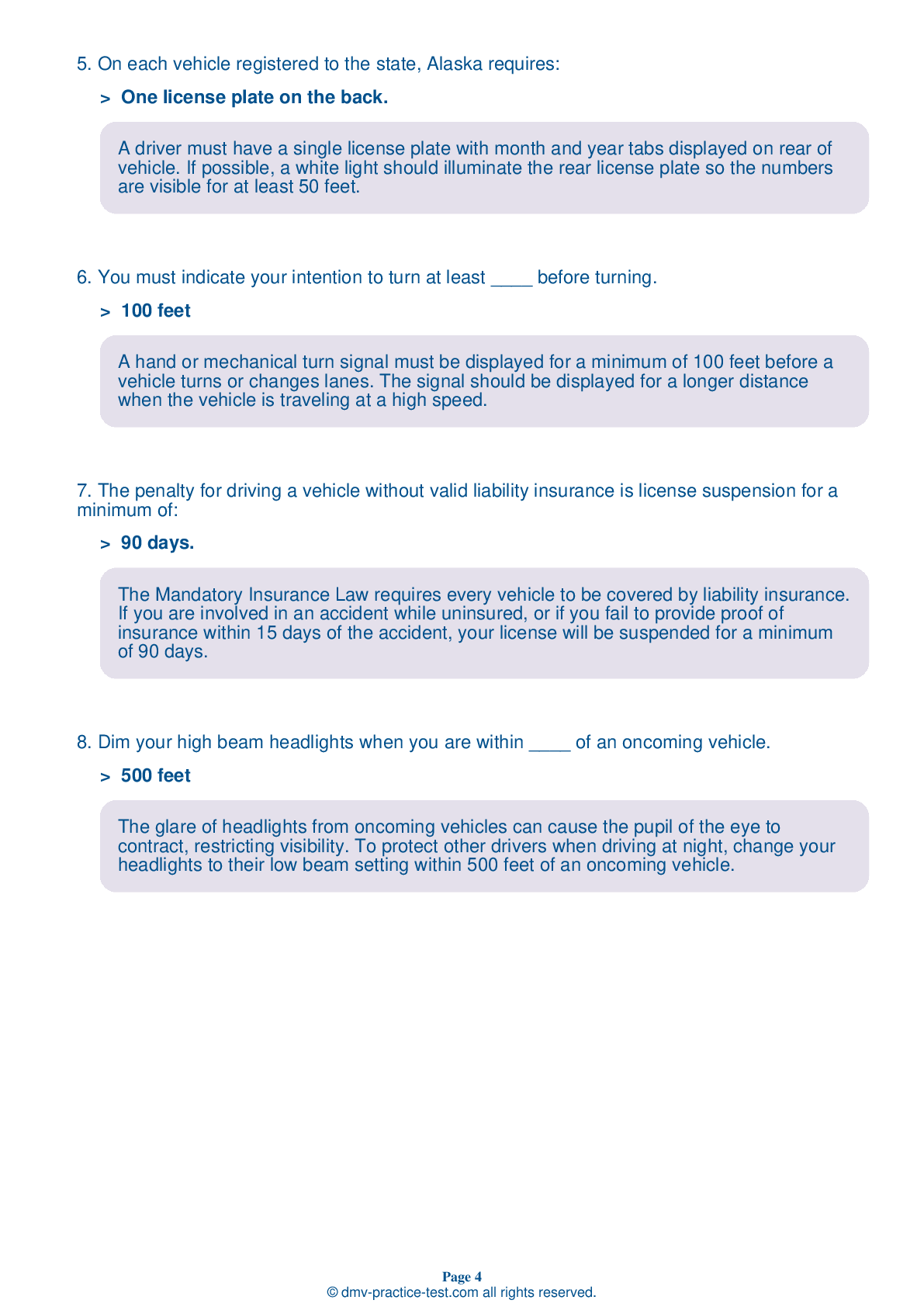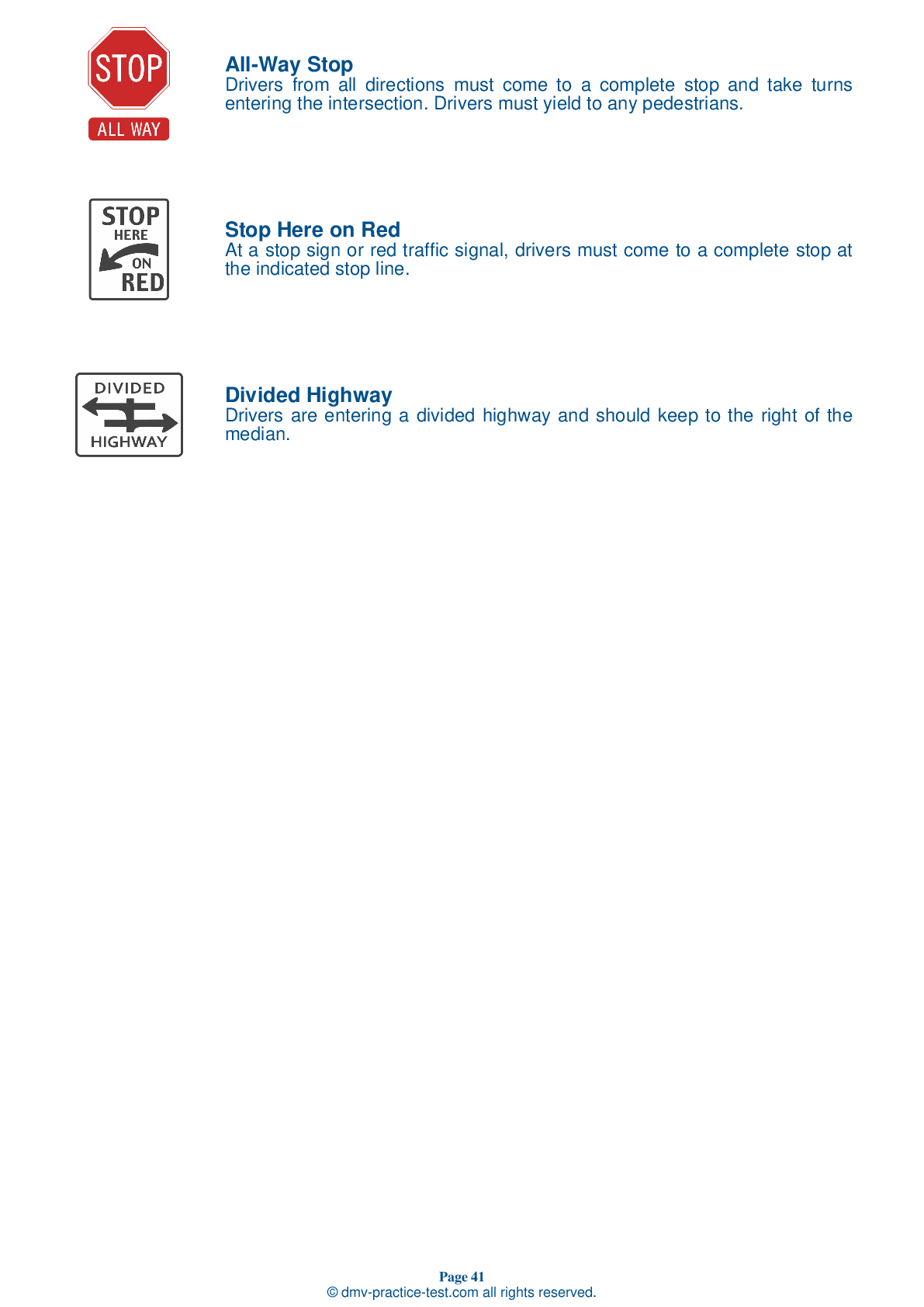FREE Alaska DMV Practice Test #7
This Alaska DMV practise tests has just been updated for January 2025. It contains questions based on the most essential traffic signs and limitations from the Alaska Driver Handbook for 2025. Use actual questions that are very close (often identical!) to the DMV driving permit test and driver's licence exam to prepare for the DMV driving permit test and driver's licence exam.
To help you recall the topics, each practise test question includes a suggestion and explanation. The written component of the official DMV test will include questions about road rules, traffic signs, and driving statutes, as well as information from the Driver Handbook.
To get the required passing mark, you must correctly answer 16 out of 20 questions. Take our DMV practise exam to help you prepare for your Alaska instruction permit or driver's licence.
The DMV exam is available in multiple languages.
Using any form of testing aid will result in an automatic failure, and the DMV may take further action against your driver's licence, so don't do it.
1 . What is the only way to reduce your blood alcohol concentration (BAC)?
The only method that effectively reduces your BAC is to not drink alcohol for a period of time. Coffee, exercise, and cold showers cannot reduce your BAC or change the effects of alcohol. They can help you remain awake, but they cannot change your BAC or make you sober.
2 . To stay safe while driving under poor weather conditions, you should:
Bald tires do not allow you full control of your vehicle while attempting to stop on a wet surface. Drive on tires with good tread at a safe distance from the car ahead. Decrease your speed any time conditions are less than ideal.
3 . A double solid yellow line down the center of a two-lane road indicates:
Yellow lines are used to separate traffic moving in opposite directions. Solid lines indicate that drivers are not permitted to pass.
4 . This sign means:
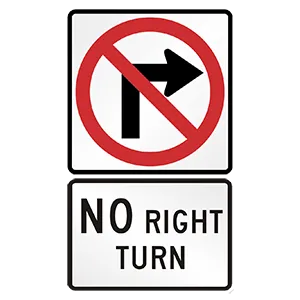
A regulatory sign displaying a red circle with a red slash through the middle indicates that a specific action is prohibited. Right turns are not permitted where this sign is posted.
5 . This sign means:
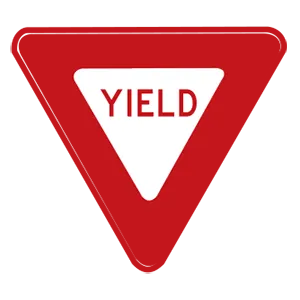
Traffic signs with three sides of equal length warn drivers to slow down when approaching an intersection and to be prepared to come to a complete stop to yield to other drivers or pedestrians. Drivers may proceed when it is safe to do so.
6 . When merging onto a freeway, it is usually best to:
When entering a freeway, use the on-ramp to accelerate to the speed of freeway traffic so you can blend in smoothly and safely. Entering traffic must yield to traffic already on the freeway.
See the exact questions that will be on the 2025 Alaska DMV exam.
99.2% of people who use the cheat sheet pass the FIRST TIME
LT gives us an insight on how the cheat sheet provided her with all the study questions she needed before taking her test.
Joe initially studied with the handbook and failed his test, he eventually found us online, studied and pass his test the first time around.
